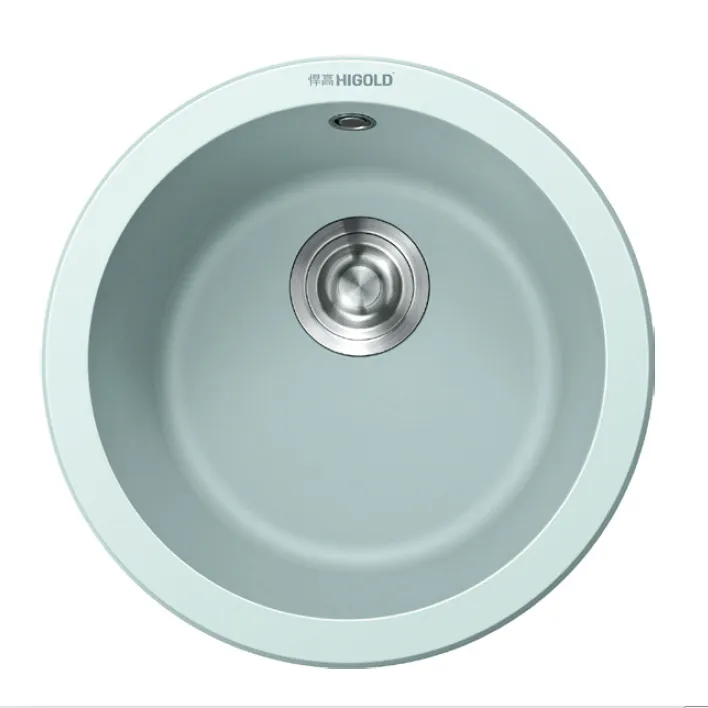The sink is an indispensable part of the kitchen. The types and materials of kitchen sinks are becoming increasingly rich. Composite kitchen sinks have become the first choice for many family kitchens due to their excellent functionality and aesthetics. However, in daily use, many people often encounter such a question: Can a hot pot be directly placed in a composite kitchen sink? This seemingly simple question actually involves many aspects such as the heat resistance, durability, daily use habits, and kitchen safety of the sink material.
This article will analyze in detail the material characteristics of the composite sink, the possible risks of putting a hot pot in the sink, and how to use and protect the sink correctly, so as to help consumers better understand the use specifications of the composite kitchen sink, avoid damage to the sink due to improper operation, and ensure the long-term safety and convenience of the kitchen.

What is a composite kitchen sink?
Composite kitchen sinks are usually synthesized from a variety of materials through special processes. The most common composite kitchen sink is a composite of materials such as quartz and resin. Compared with traditional single-material sinks such as stainless steel and ceramics, composite kitchen sinks have many advantages in material, appearance, durability, and use experience.
Quartz composite kitchen sink
The main raw material of quartz composite sink is quartz sand, which usually accounts for 80%-90% of the total sink material. Quartz sand has very high hardness and wear resistance, and can effectively resist the erosion of scratches, impacts and stains, so it has a very strong ability to resist damage. Quartz composite kitchen sinks are usually processed by high temperature and high pressure to make their surface denser and stronger.
Resin and other composite materials
Resin is the key substance that combines quartz sand and other filling materials. Resin can provide flexibility, elasticity and better corrosion resistance to the sink. Resin can also give the sink different colors and textures, making it more modern and fashionable. In addition, composite kitchen sinks can also further enhance their characteristics by adding other materials (such as ceramics, acrylic, etc.), such as improving heat resistance and antibacterial properties.
Appearance and design
The appearance design of composite kitchen sinks is usually simple and modern, with rich colors, and can be selected according to different home decoration styles. Compared with traditional sinks, composite kitchen sinks have smoother surfaces and do not have the common scratch problems of metal sinks, so they are visually more beautiful and can add a modern touch to the kitchen.

How is the heat resistance of composite kitchen sinks?
The heat resistance of composite sinks is an important issue of concern to many consumers. After all, hot pots are common items in the cooking process. If hot pots are placed directly into the sink, will it damage the surface of the sink or affect its service life? In order to answer this question, we first need to understand the heat resistance of composite kitchen sinks.
Heat resistance of quartz composite kitchen sinks
Quartz composite kitchen sinks have strong high temperature resistance. Quartz itself is a very hard and high temperature resistant material that can usually withstand high temperatures. However, the heat resistance of quartz composite kitchen sinks depends not only on the content of quartz, but also on the composition and process design of the resin in the sink. Although resin can enhance the toughness and corrosion resistance of the sink, its high temperature resistance is relatively weak. Therefore, although quartz composite kitchen sinks can withstand certain high temperatures for a short period of time, long-term exposure to high temperatures, especially when the hot pot is directly in contact with the sink surface, may cause the sink surface to deform, crack or fade.
Heat resistance limits of composite kitchen sinks
Composite kitchen sinks of different brands and models vary in heat resistance. Generally speaking, the heat resistance temperature of quartz composite sinks is usually around 180°C, but if the temperature is too high and exceeds the tolerance range of the sink material, it may cause the sink surface to crack or produce irregular deformation. In addition, the surface of the composite kitchen sink may be affected by the concentrated heat, causing thermal expansion or local deformation. Therefore, although the composite kitchen sink has strong heat resistance, there is still a certain risk in placing a hot pot directly into the sink.
Can I put a hot pot into a composite kitchen sink?
Heat damage and deformation
As mentioned earlier, placing a hot pot directly into a composite kitchen sink may cause uneven heating of the sink surface, resulting in heat damage. In particular, the resin part contained in the composite kitchen sink has relatively poor heat resistance and is easily affected by high temperatures. The temperature of a hot pot is usually high, and after exceeding the tolerance range of the composite sink, it may cause cracks, discoloration or deformation on the surface of the sink. In particular, if the hot pot is placed directly in the sink for a long time, the surface of the sink will be affected by thermal expansion, resulting in a decrease in the material performance of the sink.
Color difference and stains on the surface of the sink
Even if the surface of the composite kitchen sink is smooth, the pigment on the surface of the sink may fade or change color due to the influence of high temperature on the surface of the sink. Grease and food residues in the hot pot may also penetrate into the surface of the sink due to the high temperature, making it difficult to clean and causing stains to accumulate. In addition, high-temperature steam may cause a certain degree of corrosion to the surface of the sink, which may affect the appearance and functionality of the sink over time.
May cause the sink to crack
Some inferior or substandard composite kitchen sinks will show poor heat resistance when facing high temperatures. Especially when a hot pot is in contact with the sink for a short time, the drastic change in temperature difference will cause thermal expansion of the sink material, resulting in cracks or cracks on the sink surface. If the hot pot is kept in the sink for a long time, the constant change in temperature difference may further aggravate the damage to the sink.

How to use the composite kitchen sink correctly?
In order to avoid damage caused by placing a hot pot in the composite kitchen sink, consumers should follow the following usage specifications and suggestions:
Avoid placing high-temperature pots directly into the sink
In order to ensure the service life of the composite sink, it is recommended to avoid placing the hot pot directly into the sink as much as possible. The hot pot can be placed on high-temperature resistant pot mats, pot racks and other items to ensure that there is no direct contact between the hot pot and the sink. In this way, the heat damage caused by the hot pot to the sink can be effectively avoided.
Wait for the pot to cool down before placing it in the sink
After using the hot pot, it is best to wait for the pot to cool down naturally to room temperature before placing it in the sink. Although this may increase the operation time, it can greatly reduce the damage caused by the hot pot to the composite kitchen sink. If time is tight, you can speed up the cooling process by rinsing the pot with cold water, but make sure that the cold water does not flow directly into the sink to avoid unnecessary risks caused by alternating hot and cold.
Use high temperature resistant accessories
Some composite kitchen sink manufacturers provide special high temperature resistant accessories, such as pot racks and pot pads, to prevent hot pots from damaging the sink surface. Consumers can choose and install these accessories according to actual needs to give the sink extra protection when using hot pots.
Regular cleaning and maintenance
Regularly cleaning the surface of the composite sink can effectively prevent stain accumulation and surface corrosion. Use non-corrosive detergents and soft cleaning tools to avoid wear and scratches on the sink surface. In addition, regularly check the sink surface for cracks or deformation, and repair and maintain it in time to extend the service life of the sink.
Why is Higold Known for Its Competitive Pricing on Kitchen Products?
Higold combines cutting-edge technology with efficient production processes, allowing us to offer low prices while maintaining the high quality that we are known for. By reducing costs through automation and optimizing our supply chain, we can pass these savings on to you. As a supplier and manufacturer, we ensure that you get the best value for your money.


